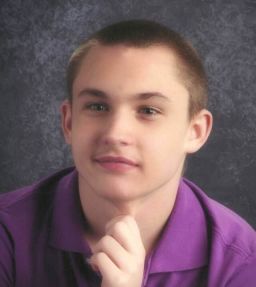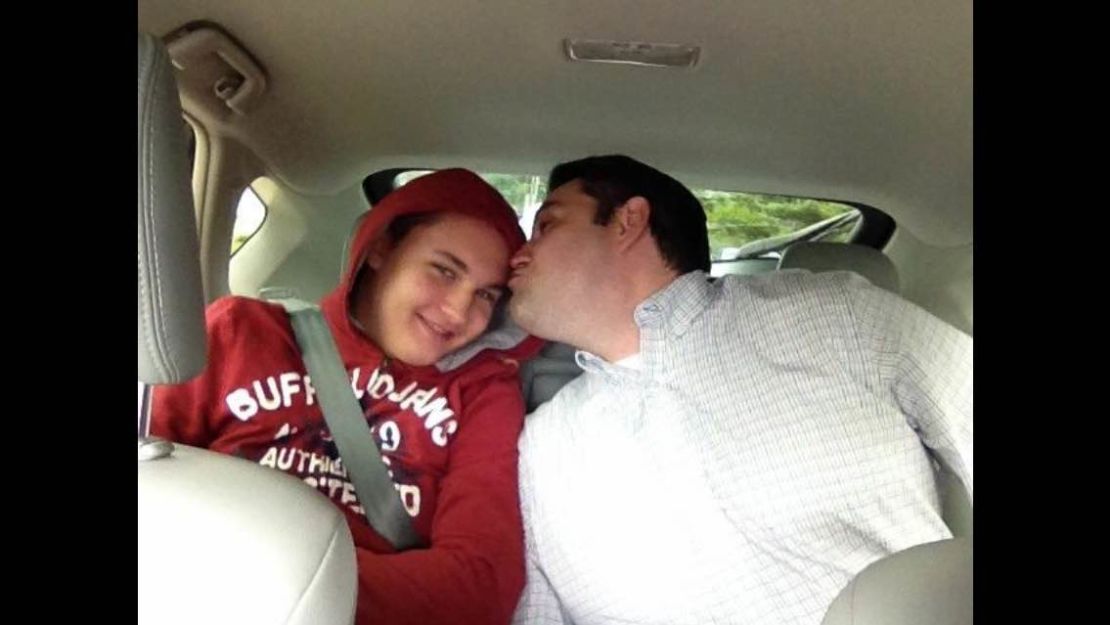Story highlights
A family in Pennsylvania donated their autistic teen son's brain to research after he died
"Epilepsy is the way that he died, but autism is the way he lived," his mother says
Scientists are seeking more brain donations in their search for better autism therapies
It was a heart-shattering April that Leslie Bolen will never forget.
Five months ago, her son Michael died at age 14 after a seizure caused him to go into cardiac arrest and suffer anoxic brain injury, which occurs when there is a lack of oxygen in the brain.
Michael, who had a severe form of autism, also had a history of epilepsy. About 20% to 30% of children with autism spectrum disorder develop epilepsy by the time they reach adulthood, according to the National Institute of Neurological Disorders and Stroke.
“Regardless of their abilities, regardless of their illnesses, unless it is diagnosed and expected, you really just don’t think your child is going to pass away before you,” Bolen said.

As Bolen stood in a cold hospital room with her husband, in complete shock at their loss, she heard a doctor ask whether Michael’s organs would be donated – and then she had an idea.
“I said, ‘Well, what about his brain?’ And [the doctors] said, ‘Excuse me?’
And I said, ‘Well, you know, epilepsy is the way that he died, but autism is the way he lived.’ “
Bolen and her family donated Michael’s brain to a national program called Autism BrainNet, a network of research institutions that facilitates the study of autism using the brain tissue of deceased patients who had the developmental disorder.
Michael’s family hopes that his brain may help scientists gain crucial insights into autism spectrum disorder, which Michael lived with and that affects about one in 68 children in the United States.
Loving and losing a son with autism
The moment Michael Bolen was born, he let out a piercing cry and commanded the attention of the room. Just like that, his mother said, he always seemed to know how to capture the interest of everyone around him.
“I’m not joking, from the moment he was born,” Leslie Bolen said as she reminisced about the day she gave birth to her second child in 2001.
Eventually, Michael’s cries turned into silence. At 19 months old, he was diagnosed with a severe form of autism that caused him to lose his speech.
“My mom came over, and she kept calling his name, and he wasn’t responding,” Bolen said, remembering a moment when Michael was 17 months old.
“She just said ‘Gosh, it’s like he lives in his own little world.’ And, you know, we had seen the hand flapping and the spinning for 20 minutes at a time, and the second she said that, I just went, ‘Uh!’ And I ran over to my computer, and I typed in the words ‘own little world’ and ‘autism,’ and, I mean, page after page after page, I was just reading my son’s behaviors. … I just sat there crying, saying, ‘He has autism; he has autism,’ and I made an emergency appointment with the pediatrician.”
As the few words that Michael had learned as a baby disappeared, he would command attention with his movements.
“He was nonverbal; however, 98% of the time, he would communicate his point very well. When he wasn’t happy, you knew about it. When he was happy, you knew about it,” said Bolen, who lives in Pennsylvania with her husband and two other children.
When Michael wasn’t happy, he would turn self-injurious and aggressive, Bolen said, even headbutting her in the throat or banging his head so forcefully against the wall that it would dent or break.
When he was happy, he would smile nonstop and often snuggle up with his father to watch movies and play games on an iPad.
“He was so good with Michael,” Bolen said of her husband, with a quiver in her voice.
“Michael was an incredibly hyperactive child. He got into everything all the time. I used to joke he was like the Tasmanian Devil and Tigger all in one, because he didn’t just bounce, he didn’t just whiz, he did both at the same time nonstop,” she said. “It was amazing to watch his mind work.”

Few brains have been studied
Since autism is a complex disorder that has been poorly understood, it has been difficult to treat – and even diagnose – without a larger number of brain donations to study.
In 2014, the Simons Foundation, Autism Speaks and the Autism Science Foundation launched a registration site for the Autism BrainNet network, called It Takes Brains, which serves as a sort of autism brain bank that collects postmortem donations.
The donated brains are examined and analyzed in search of clues to the cellular and genetic causes of autism. The general consensus among scientists is that once researchers know what causes the disorder, they might get closer to finding improved therapies.
“Before people started looking at the brains of patients with Alzheimer’s disease, nobody knew what was causing the memory problems associated with that disease,” said David Amaral, director of Autism BrainNet and a neuroanatomist at the University of California, Davis.
“Similarly, the idea is that until we understand what is different about the brain of a person with autism, it will be difficult for us to try to figure out appropriate treatments,” he said. “We need to determine the targets for treatment in autism.”
In the history of Alzheimer’s disease research, about 10,000 brain autopsies had been performed by 2005. Meanwhile, “in the entire history of autism research, the number of brains that have been looked at is less than a couple hundred total,” Amaral said.
Scientists have used brain tissue to identify dozens of genes that may play a role in causing autism and could help in the search for a better treatment, but there is much more waiting to be discovered.
What scientists are searching for
There is still no cure for autism. However, Amaral said he envisions that we soon may be able to individually treat the various issues associated with autism – such as sleep disorders, anxiety, social interaction difficulties and gastrointestinal problems – and eventually, such treatment could create a cocktail of a cure, so to speak.
“It’s the cure that always get the attention. However, this sort of research can sometimes provide very meaningful therapies for patients, which greatly improve their lives. Additionally, identifying biomarkers or other clues associated with autism may give better insights into why it develops in the first place,” said CNN Chief Medical Correspondent Dr. Sanjay Gupta, who is also a practicing neurosurgeon.
Meanwhile, the hunt for a cure seems to have caused some controversy in the autism community. Some families are concerned that seeking a treatment might stunt the acceptance of autism among the public, Bolen said.
“I feel like it’s very divided, cure versus acceptance,” she said, adding that some families “wouldn’t change their child for the world,” even if they had an autism cure.
“I wouldn’t change Michael for the world, but my God, if I could take away the hurt. Imagine going your whole life not being able to say ‘my tummy hurts,’ ‘I feel sick to my stomach,’ ‘I want to go there for dinner,’ ‘I love you,’ ” Bolen said. “If there was one thing that we could do to keep another family from experiencing not knowing their child or keeping their child from putting their head through a wall, then we felt like it was something that we needed to do.”
Join the conversation
All in all, Bolen said, she remains hopeful.
“I believe in God, and I believe that he has a plan for all of us,” she said. “I don’t understand why Michael had to suffer like he did all those years, and I don’t understand why he was taken away from us. I can only pray for understanding and that, while my heart is forever broken, perhaps his contribution can lead to some answers.”

















